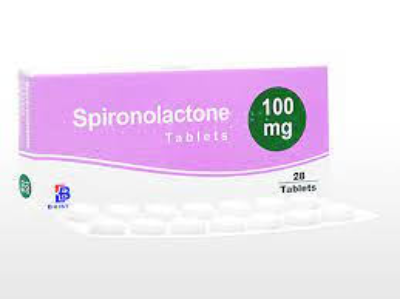


Ascites - malignant
Ascites and oedema associated with hepatic cirrhosis
Congestive heart failure
Hyperaldosteronism - primary: diagnosis
Hyperaldosteronism - primary: treatment
Nephrotic syndrome
Alternatively, in moderate to severe heart failure (adjunct), give 25mg once daily initially. Titrate to response, up to maximum 50mg once daily.
After diagnosis of hyperaldosteronism has been established by more definitive testing, spironolactone may be administered at doses of 100mg to 400mg daily in preparation for surgery. For patients who are unsuitable for surgery spironolactone may be employed for long term maintenance therapy at the lowest effective dosage for the individual patient.
Initial dose: 1mg/kg to 3mg/kg given in divided doses. Titrate to response and tolerance. If necessary, the tablets may be crushed to make a suspension. Treatment to be given under specialist guidance.
Initial dose: 1mg/kg to 2mg/kg given in divided doses. Titrate to response and tolerance. If necessary, the tablets may be crushed to make a suspension.
Consider giving up to 7mg/kg daily in resistance ascites.
The Renal Drug Handbook suggests the following doses based on Glomerular Filtration Rate (GFR):
GFR 10 to 50ml/minute: 50% of normal dose.
GFR less than 10ml/minute: Use with caution.
Small studies have shown that doses of 25mg spironolactone three times per week can be used safely in haemodialysis patients although it is unknown whether or not this dose would have any therapeutic benefit. Potassium levels should be monitored closely.
Elderly
Predisposition to acidosis
Breastfeeding
Diabetes mellitus
Diabetic nephropathy
Glucose-galactose malabsorption syndrome
Hepatic impairment
Hyponatraemia
Lactose intolerance
Pregnancy
Renal impairment
Advise ability to drive/operate machinery may be affected by side effects
Not all available brands are licensed for all indications
Some formulations contain lactose
Monitor periodically for signs of fluid or electrolyte imbalance
Monitor serum creatinine
Monitor serum potassium periodically
Discontinue treatment before glucose tolerance test
May affect results of some laboratory tests
Discontinue if hyperkalaemia occurs
Carcinogenic in rats on long term use and at high doses
Advise patient not to take NSAIDs unless advised by clinician
Advise on problems of salt substitutes/high intake of potassium-rich food
Spironolactone has been found to be carcinogenic in rodents when administered at high doses over a long period of time. Long term use in young patients requires careful consideration.
Use with caution in patients with diabetic nephropathy as there is an increased risk of hyperkalaemia. Spironolactone should be discontinued at least 3 days before a glucose tolerance test because of the risk of severe hyperkalaemia in these patients.
Reversible hyperchloraemic metabolic acidosis, usually with hyperkalaemia, has been reported in patients with decompensated hepatic cirrhosis, even in the presence of normal renal function. Use with caution in patients with a predisposition to metabolic acidosis.
Hyperkalaemia in patients with severe heart failure
Avoid using oral potassium supplements in patients with serum potassium greater than 3.5 mEq/l. The recommended monitoring for potassium and creatinine is 1 week after initiation or increase in dose of spironolactone, monthly for the first 3 months, then quarterly for a year, and then every 6 months.
Use spironolactone with caution in pregnancy.
Diuretics are no longer used as standard therapy during pregnancy and should only be used for particular indications. Spironolactone should only be chosen if therapy with an aldosterone antagonist is absolutely necessary.
Use spironolactone with caution in breastfeeding.
Abdominal cramps
Acute renal failure
Agranulocytosis
Alopecia
Arrhythmias
Ataxia
Benign breast neoplasm
Blood disorders
Blood urea increased
Breast pain
Changes in hepatic function
Changes in libido
Clumsiness
Confusion
Diarrhoea
Dizziness
Drowsiness
Drug rash with eosinophilia and systemic symptoms (DRESS)
Electrolyte disturbances
Eosinophilia
Female type hair growth
Gastritis
Gastro-intestinal symptoms
Gastro-intestinal ulceration and bleeding
Gynaecomastia
Headache
Hepatotoxicity
Hyperkalaemia
Hypersensitivity reactions
Hypertrichosis
Hyponatraemia
Impotence
Increase in blood urea nitrogen
Leg cramps
Lethargy
Leukopenia
Malaise
Menstrual disturbances
Metabolic acidosis
Muscle spasm
Nausea
Osteomalacia
Paralysis
Paraplegia
Pemphigoid reaction
Pruritus
Rash
Sexual dysfunction
Shock
Shortness of breath
Stevens-Johnson syndrome
Sweating
Swelling
Syncope
Thrombocytopenia
Toxic epidermal necrolysis
Urticaria
Voice changes
Vomiting